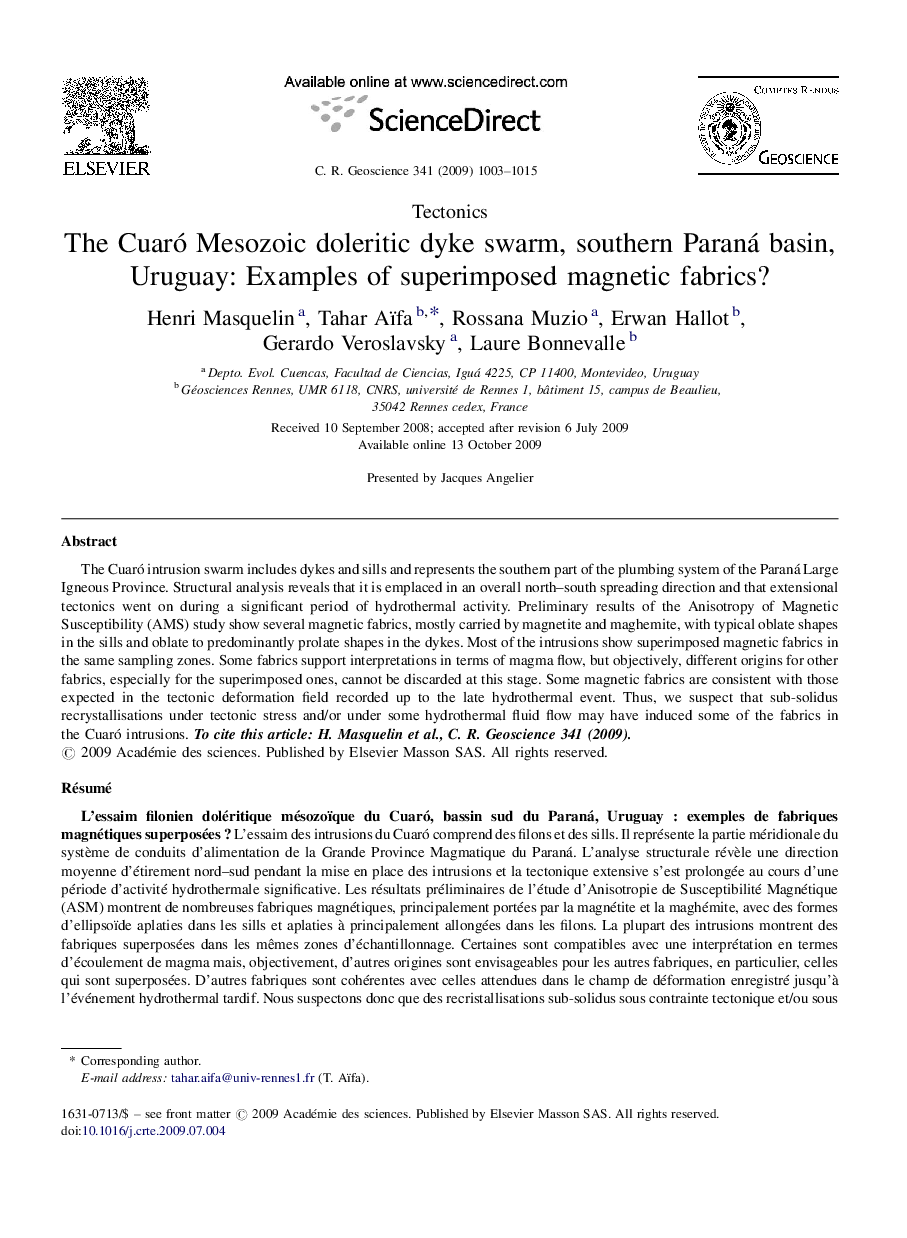| Article ID | Journal | Published Year | Pages | File Type |
|---|---|---|---|---|
| 4462579 | Comptes Rendus Geoscience | 2009 | 13 Pages |
The Cuaró intrusion swarm includes dykes and sills and represents the southern part of the plumbing system of the Paraná Large Igneous Province. Structural analysis reveals that it is emplaced in an overall north–south spreading direction and that extensional tectonics went on during a significant period of hydrothermal activity. Preliminary results of the Anisotropy of Magnetic Susceptibility (AMS) study show several magnetic fabrics, mostly carried by magnetite and maghemite, with typical oblate shapes in the sills and oblate to predominantly prolate shapes in the dykes. Most of the intrusions show superimposed magnetic fabrics in the same sampling zones. Some fabrics support interpretations in terms of magma flow, but objectively, different origins for other fabrics, especially for the superimposed ones, cannot be discarded at this stage. Some magnetic fabrics are consistent with those expected in the tectonic deformation field recorded up to the late hydrothermal event. Thus, we suspect that sub-solidus recrystallisations under tectonic stress and/or under some hydrothermal fluid flow may have induced some of the fabrics in the Cuaró intrusions.
RésuméL’essaim des intrusions du Cuaró comprend des filons et des sills. Il représente la partie méridionale du système de conduits d’alimentation de la Grande Province Magmatique du Paraná. L’analyse structurale révèle une direction moyenne d’étirement nord–sud pendant la mise en place des intrusions et la tectonique extensive s’est prolongée au cours d’une période d’activité hydrothermale significative. Les résultats préliminaires de l’étude d’Anisotropie de Susceptibilité Magnétique (ASM) montrent de nombreuses fabriques magnétiques, principalement portées par la magnétite et la maghémite, avec des formes d’ellipsoïde aplaties dans les sills et aplaties à principalement allongées dans les filons. La plupart des intrusions montrent des fabriques superposées dans les mêmes zones d’échantillonnage. Certaines sont compatibles avec une interprétation en termes d’écoulement de magma mais, objectivement, d’autres origines sont envisageables pour les autres fabriques, en particulier, celles qui sont superposées. D’autres fabriques sont cohérentes avec celles attendues dans le champ de déformation enregistré jusqu’à l’événement hydrothermal tardif. Nous suspectons donc que des recristallisations sub-solidus sous contrainte tectonique et/ou sous un écoulement de fluide hydrothermal puissent avoir induit certaines fabriques des intrusions du Cuaró.
